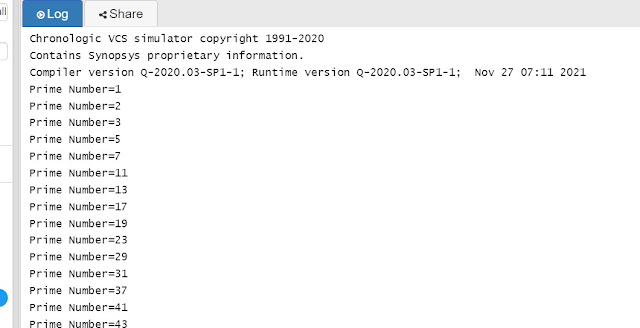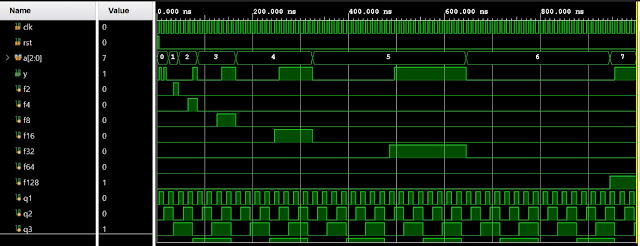Vedic Multiplier Design
8x8 Vedic Multiplier using Ripple carry adder and 4x4 multiplier module vedic8x8( input [7:0] a,b, output [15:0] prod ); wire [7:0] mult0, mult1, mult2, mult3; wire [7:0] sum0; wire [11:0] sum1, sum2; wire carry0, carry2, carry3; vedic4x4 VM_i0(a[3:0],b[3:0],mult0); vedic4x4 VM_i1(a[3:0],b[7:4],mult1); vedic4x4 VM_i2(a[7:4],b[3:0],mult2); vedic4x4 VM_i3(a[7:4],b[7:4],mult3); ripple_adder_8bit RA_i0({4'b0,mult0[7:4]},mult2,1'b0,sum0,carry0); ripple_adder_12bit RA_i1({4'b0,mult1},{mult3,4'b0},1'b0,sum1,carry1); ripple_adder_12bit RA_i2({4'b0,sum0},sum1,1'b0,sum2,carry2); assign prod = {sum2,mult0[3:0]}; endmodule 4x4 Vedic Multiplier using Ripple carry adder and 2x2 multiplier module vedic4x4( input [3:0] a,b, output [7:0] prod ); wire [3:0] mult0, mult1, mult2, mult3; wire [3:0] sum0; wire [5:0] sum1, sum2; wire carry0, carry1, carry2; vedic2x2 VM_i0(a[1:0],b[1:0],mult0); vedic2x2 VM_i1(a[1:0],b[3:2],mult1);








